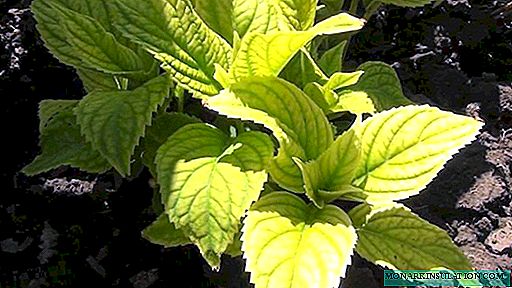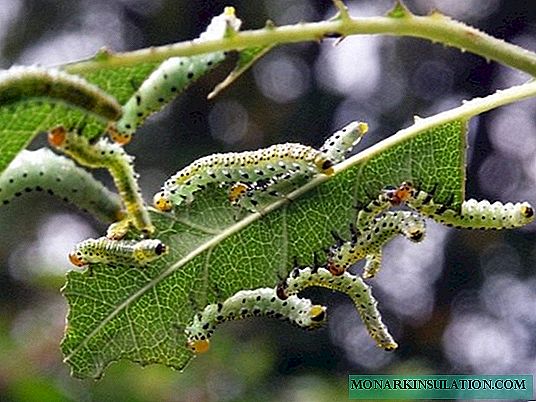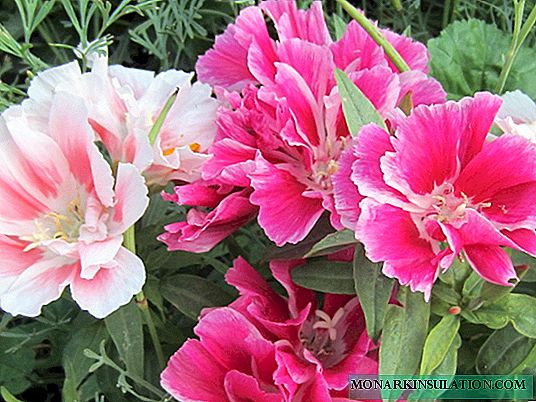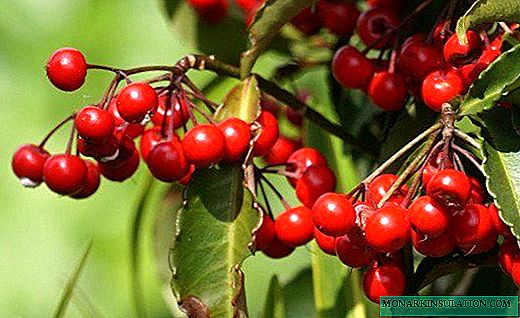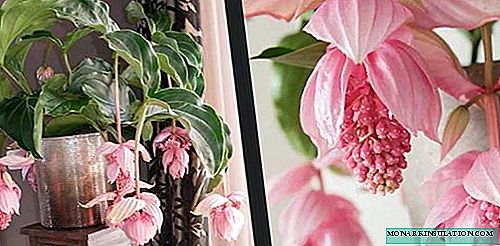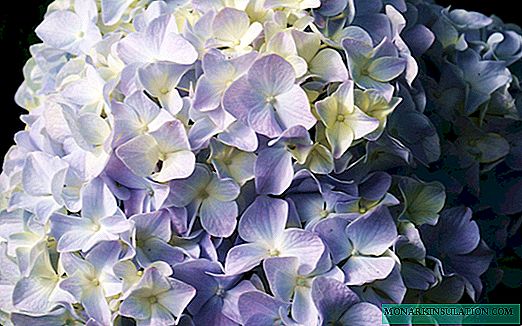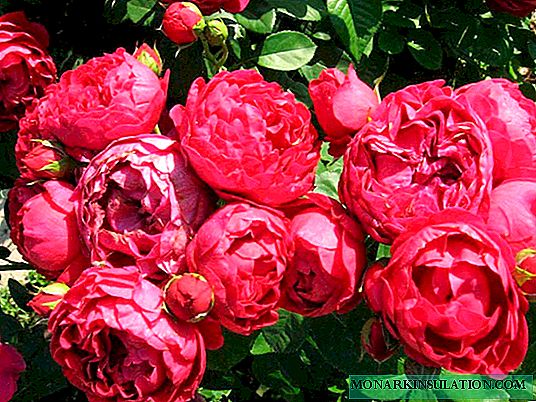Clematis is a popular climbing plant among gardeners. Rich greenery, bright inflorescences and a long flowering period will not leave anyone indifferent. This article tells how to grow a similar plant in the garden at the cottage, provides tips and advice on care.
Flower description
Clematis belongs to the Lyutikov family and is a perennial herb. Depending on the variety, it looks like a climbing vine, shrub or shrub. In Russia, this plant is called a prince, a clematis, and a lozinka. The scientific name "Clematis" in Greek means "branch or shoot of grapes," making it clear what such a crop looks like.
Reproduction of clematis is possible both by seed and vegetative methods. The seed method is divided into two types: sowing seeds and growing seedlings.
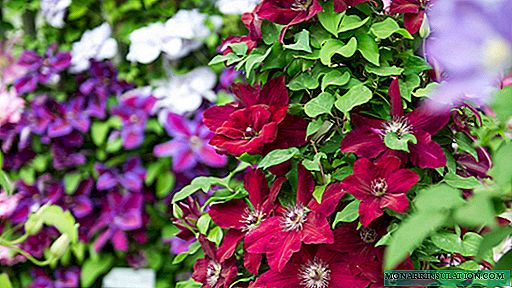
Clematis
Seeding time depends on the regional location of the site. In southern regions with short and warm winters, seeds are planted in the fall. In areas with small frosts, the sprouted clematis is covered for the winter with a layer of humus, and then snow.
For your information! Planting clematis with seeds in soil heated to 15 ° C is practiced in various regions.
How to collect and store clematis seeds
Before you grow clematis from seeds to seedlings, you need to get seed. Clematis seeds are purchased in a specialized store or collected at home. On a flowering plant, it is necessary to collect inflorescences in which the seed head has acquired a brownish tint and seeds are visible in it. Such external signs indicate that they are ripe and dried.

Ripe Clematis Flowers
Harvested seeds are stored in a dry room without access to sunlight. To avoid rotting, seeds are wrapped in paper or laid out in a thin layer on a wooden surface. It is recommended to store ripened and dried seeds for up to 48 months, some varieties are smaller.
Important! Freshly harvested seeds germinate much faster than their counterparts, which have been stored for more than 12 months.
The size of the clematis seeds affects the planting time and germination duration. Small are considered to be 3.1–5.1 mm long and 1.6–3.2 mm wide; they are sown from the beginning of spring to April, average 4.8–6 mm long and 3.2–4.5 mm wide - in the first half of January, large 6.5-12.5 mm long and 5-10 mm wide - in the autumn months.

Clematis seeds
Woolly, spreading, clematis of Duran, Pitcher and several other species ripen with large seeds, which sprout unevenly from one to seven months. Representatives of the Manchu, whole-petalled, six-petaled and clematis from China differ in medium-sized seeds and germinate within a month or six months. Small seeds of various varieties of clematis germinate at one time in a period of two to 17 weeks.
Note! The size of the seeds has nothing to do with the size of the plant and its inflorescences.
Sowing seeds for seedlings
Another feature of clematis, in addition to a long seed germination period, is compliance with stringent conditions such as sterilization. Boxes or cups for seedlings are necessarily treated with a disinfectant solution, the soil for sowing is also sterilized, the water for irrigation is boiled and cooled. All of these preparations increase the likelihood of germination of healthy seeds.
A mixture of sand and chernozem in proportions of 1: 2 is poured into the glasses processed by disinfectant about three quarters. Clematis seeds are scattered on a carefully watered mixture, covered with a layer of 1-2 cm of chernozem or river sand. Such a depth of seeds is optimal, which will allow to germinate on time.
The top layer should also be moderately watered. Then the seed bed is covered with a glass cup, which will maintain the necessary humidity and high temperature for germination.
Watering should be moderate and regular. Therefore, this procedure is recommended to be carried out through pallets into which water is poured, or using a rubber bulb so that the seeds are not washed out of the soil. To maintain optimum humidity, the glass cup is cleaned daily for a couple of hours.
Important! Winter crops are kept on the windowsill, spring or summer - can be left on the street. The ideal temperature for seed germination is 26-30 ° C.
Large seeds need stratification for several months on the lower shelf of the refrigerator at a positive temperature of 4-6 ° C. Small seeds are planted immediately in the ground or greenhouse.

Clematis Seedlings
After the plant has sprouted and acquired two pairs of leaves (the first two leaves are called cotyledons, the next two are already real leaves), clematis seedlings are planted in a greenhouse, large pots or open ground. Planting is done in spring, after the threat of night frost is minimized.
Note! To clematis well settled down in the open ground, seedlings should be hardened. To do this, boxes with future vines are taken out daily for 3-4 hours for 1-2 weeks.
How to plant clematis seedlings in open ground
Seeds are sprouted, seedlings are stronger, now you can plant the plant in open ground. The place under the liana is selected based on the following parameters:
- amount of sunshine;
- soil characteristics;
- wind protection;
- the ability to install supports.

Clematis planting
Almost all varieties of clematis, including Clematis Helios, prefer open sunny areas. In the shade, plants go green with a minimal amount of flowers. Unlike greenery, the root system needs a shadow, which is created when planting low-growing plants at the roots of clematis.
Perennial vines are recommended to be grown on fertile slightly alkaline soil. Loose soil such as loam and sandy loam is also the best option for planting plants due to natural drainage.
Important! Planting in areas near runoff or groundwater is categorically not recommended, since increased humidity is detrimental to clematis.
Vines are planted at a distance of 0.5 m from the future support, for example, the walls of the house on the east or west side, to provide the conditions for the development of the roots.
In the selected area, seedlings or pre-germinated cuttings are planted at a distance of 1.5-2 m from each other in order to provide in the future free space of at least 0.7 m between adult plants. The same applies to the planting of clematis near trees and shrubs - at least 2 m. If clematis will be planted in dense plantations of other crops, it is necessary to isolate the depression under the root system with roofing material.
Care and feeding
It is recommended that young creepers be watered 2 times a week in the evening with water, irrigating evenly around the plant, adults less often. In no case should you pour water under the root of clematis, as there is a chance of damage to it. Loosening is a mandatory procedure after watering. Mulching with sawdust or moss avoids root overheating and maintains the moisture they need.

Top dressing
If the plant slowly grows, but less and less blooms, then you can feed it. During the formation of greenery, nitrogen top dressing is recommended. After the first buds appeared, the soil is fertilized with potassium and phosphorus fertilizers. In autumn, the use of superphosphate in granules is preferred.
Note! The amount of fertilizing is strictly regulated and calculated according to the instructions, excessive fertilizer can lead to the death of clematis.

Several varieties of clematis
Planted in compliance with all conditions, clematis becomes an adornment of any garden for many years to come. Juicy greens of creepers will give shade on a hot day, and bright flowers will delight the eye throughout the entire warm period. And the ability of a plant not to be pollinated from other varieties will make it possible to diversify the site in one small interval.


